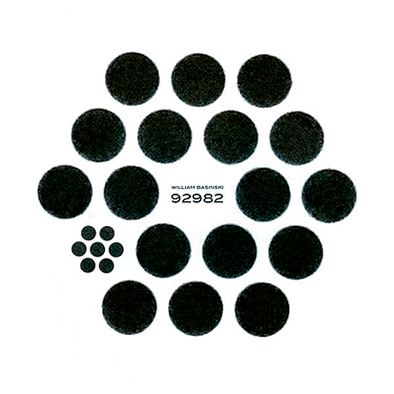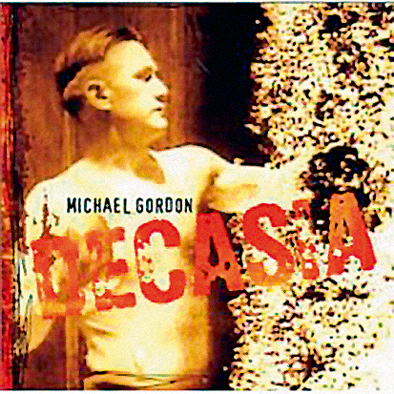|
|
| Rescue Operation for Saving Those Scarred by Time Kaspars Groševs, Artist William Basinski. 92982 (2009) Michael Gordon, Bill Morrison - Decasia: The State of Decay (2002) | |
 William Basinski - 92982. CD. 2009 | |
| William Basinski - 92982 (2009) It took sound and video artist William Basinski twenty years to discover his vein of gold - music loops that had been recorded on magnetic tapes some twenty years earlier. And, most probably, it couldn't have happened sooner, because it is time itself that has had a decisive significance in his works. Eight years ago, Basinski, in an attempt to archive (i.e. digitise) his analogue tape loops recorded in the early 1980s, realised with horror that, in the process, the sound is being distorted, and that all the musical information held on the tape is slowly disintegrating. The use of magnetic tapes entered minimalist music quite organically, and Basinski could certainly be deemed a follower of the tradition. Steve Reich used voice sound loops to create his early works of phase music It's Gonna Rain (1965) and Come Out (1966), where two reel-to-reel tape decks at different speed reproduce voice fragments which are gradually shortened, resulting in a more and more intensive delay of phases, with voice functioning as a melodic loop. Reich used a similar technique in his later piano pieces as well, and there is also a certain similarity with club music culture where voice sound loops are often used. Basinski's loops are a good deal more atmospheric and free-flowing, and in some of his pieces the rhythm almost disappears; however, process and development have their importance here as well. It is significant that Reich arrived at his tape music works by accident, because of mechanical faults - tape decks quite simply were not precise enough to play two identical tapes at exactly the same speed. Basinski gained recognition with the first recording of the crumbling tapes - The Disintegration Loops (2002), which were followed by three more sequels, the total duration of the series amounting to five hours. Essentially, 92982 offers the same formula: flowing loops, a rather rugged sound, a melancholic atmosphere, with occasional tape recording distortions. Like many earlier recordings, this too is a document from Basinski's archive - 1982 recordings of experiments with tape loops (the title contains the date of the recording). However in these compositions, and in the second one in particular, one hears not only music but also the hustle and bustle of Brooklyn outside the windows of Basinski's studio - the noises of police sirens, fireworks, helicopters. The minimalist repetitive form allows the listener to perceive a wealth of detail, discovering something new on each listening: the sounds of the city, the distortion of the magnetic tape, background noise produced by the players, ghostly apparitions of sound effects and sudden ruptures of tape loops. www.mmlxii.com | |
 Michael Gordon, Bill Morrison. Decasia: The State of Decay. CD. 2002 | |
|
Michael Gordon, Bill Morrison - Decasia: The State of Decay (Plexifilm / Cantaloupe Music, 2002) Not only are magnetic tapes doomed to gradual extinction, but also the celluloid films that were used during the early years of filmmaking, and which avant-garde filmmaker Bill Morrison chose to feature in a visualization of Michael Gordon's Decasia, a symphony about decay and deterioration. The works of both artists were combined into one performance in a stage setting designed especially for the event, which literally trapped the viewers - at the mercy of the impressive images and music. Later Morrison produced a movie version of the work, matching images to music; the film soon became an avant-garde cinema hit and, in terms of music, is truly capable of all but shattering the listener. Frankly speaking, the majority of electronic sound artists have nowhere near Gordon's ability to send shivers down one's spine, to scare and charm at the same time, because at the appropriate volume, this work is more potent than some intoxicating substance or other. Undeniably, the visual material is also worthy of note - crumbling, distorted images of unknown origin succeed one another without any thematic relationship, creating a monochromatic and decaying requiem to anonymous scenes: a dervish captured in motion, endless film tapes, a desert caravan, a drowning man being saved, a boxer's fight against an opponent (or a punch-bag) erased by time, black aircraft-like patches in the sky, and so forth. The work, over one hour long, includes a large quantity of found film footage, and often it elicits any number of questions on the context and origins of the events. As regards the musical part of Decasia, Gordon's work features certain references to the repetitive, hypnotic compositions by minimalists Glass and Reich, yet this sounds much harsher, using out of tune instruments, a prepared piano, electric guitar, percussion instruments made of car parts and similar. The sound is dense and massive, with dissonant string and wind instruments adding a hollow, rhythmic pulse. The end result sometimes sounds like a runaway steam engine or at least a portrait of Wagner as depicted by the avantgarde composer Iannis Xenakis (the UPIC system developed by Xenakis was able to transform graphic signs into electronic sounds; nowadays the system is used by artists Haswell & Hecker, whose frightening noise performance was presented and - due to the thick smoke and lasers - was invisible at the Skaņu Mežs (‘Sound Forest') festival a couple of years ago). Comparatively rarely one come across works in which images and music, each powerful in their own right, create such an impressive and successful combination, and this is precisely why Gordon's music in its CD version demands from the listener as much attention as the film in its entirety: it is simply impossible to think of anything else when listening to this decaying music. Decasia is a convincing argument in favour of the fact that music for orchestra is not merely paying lip service to the past and a disappearing medium for young composers. Decasia is available both in DVD and CD versions. A few five-minute videos are available on the website http://www.decasia.com/ /Translator into English: Sarmīte Lietuviete/ | |
| go back | |







